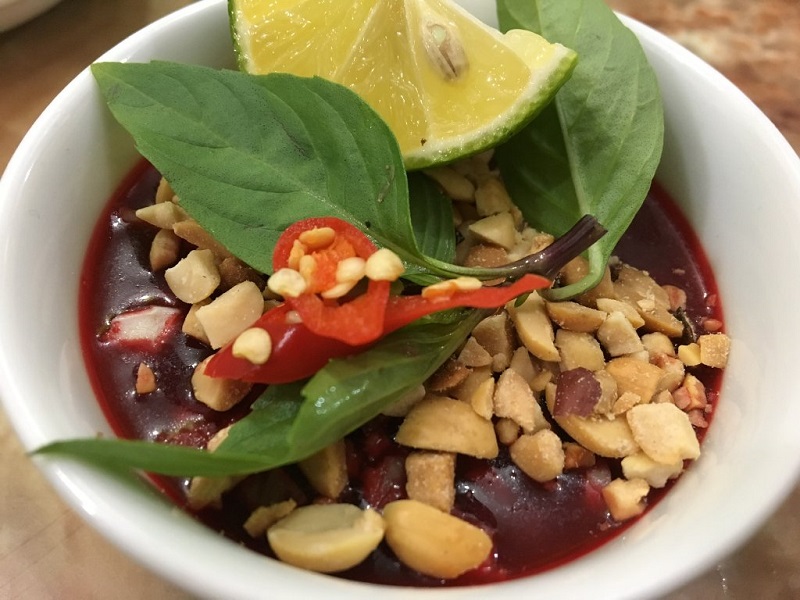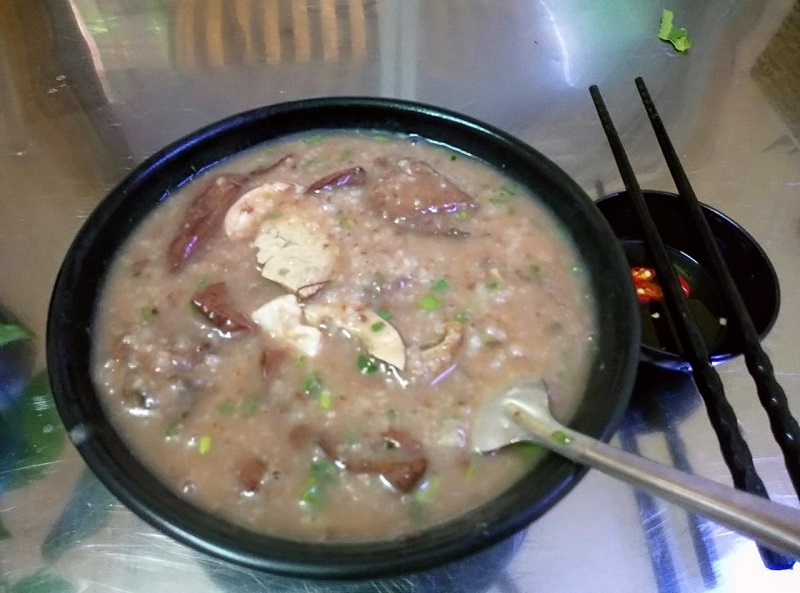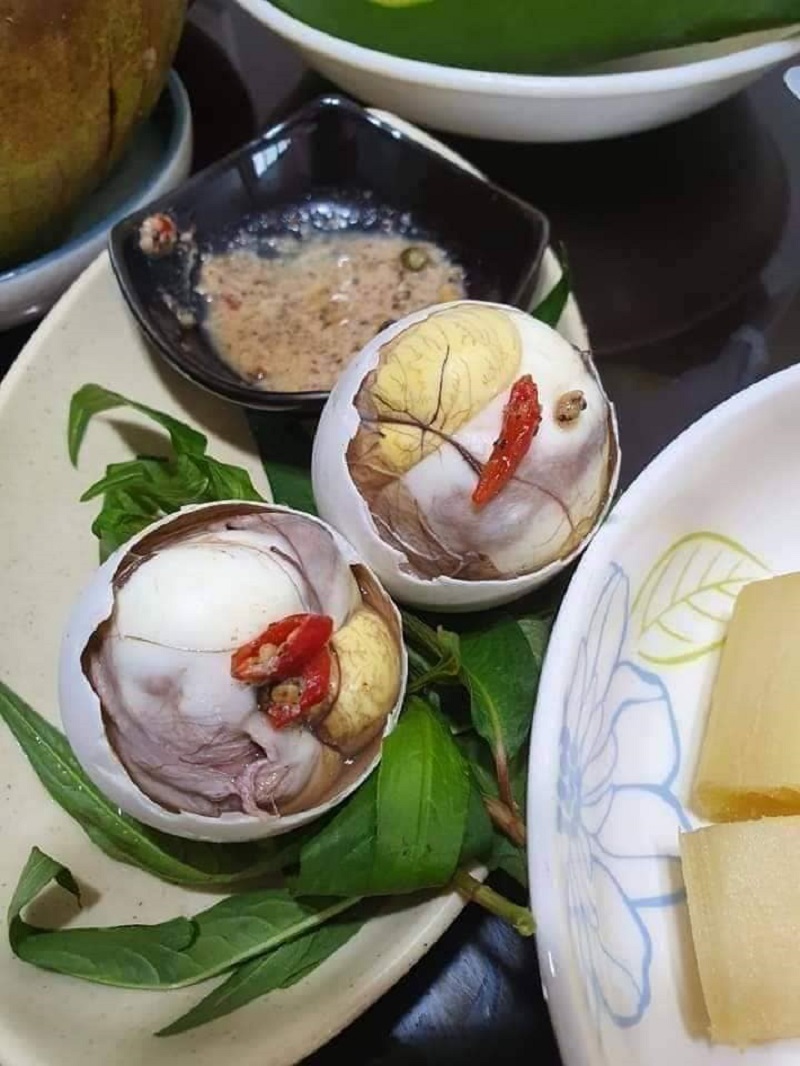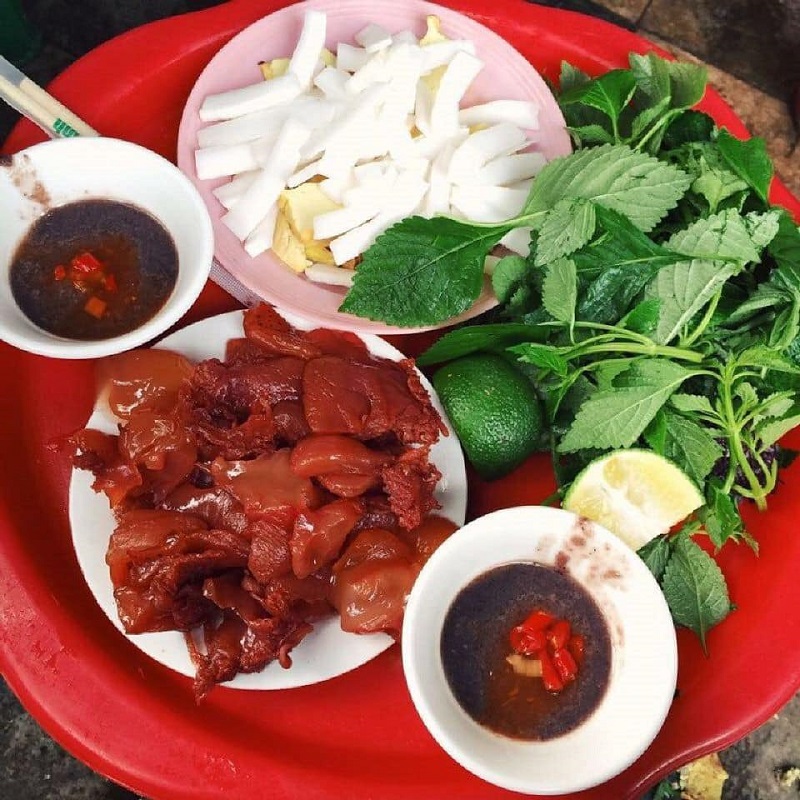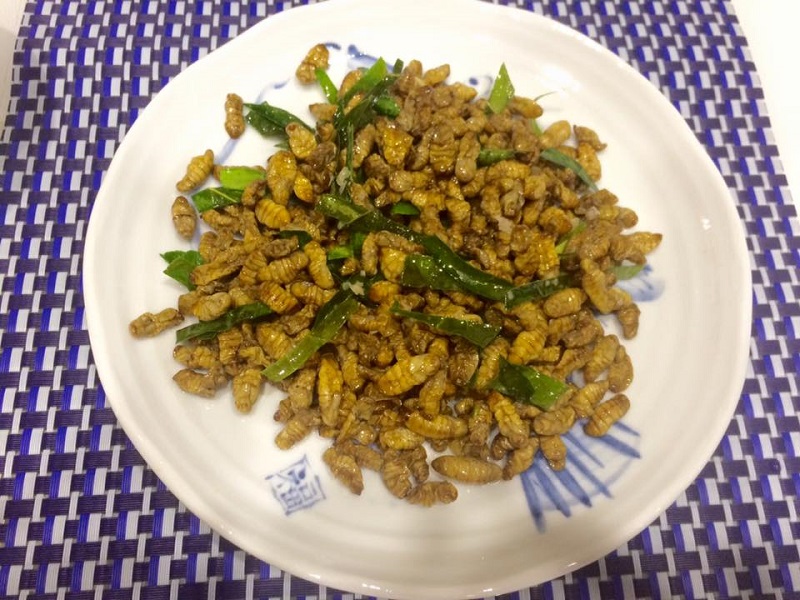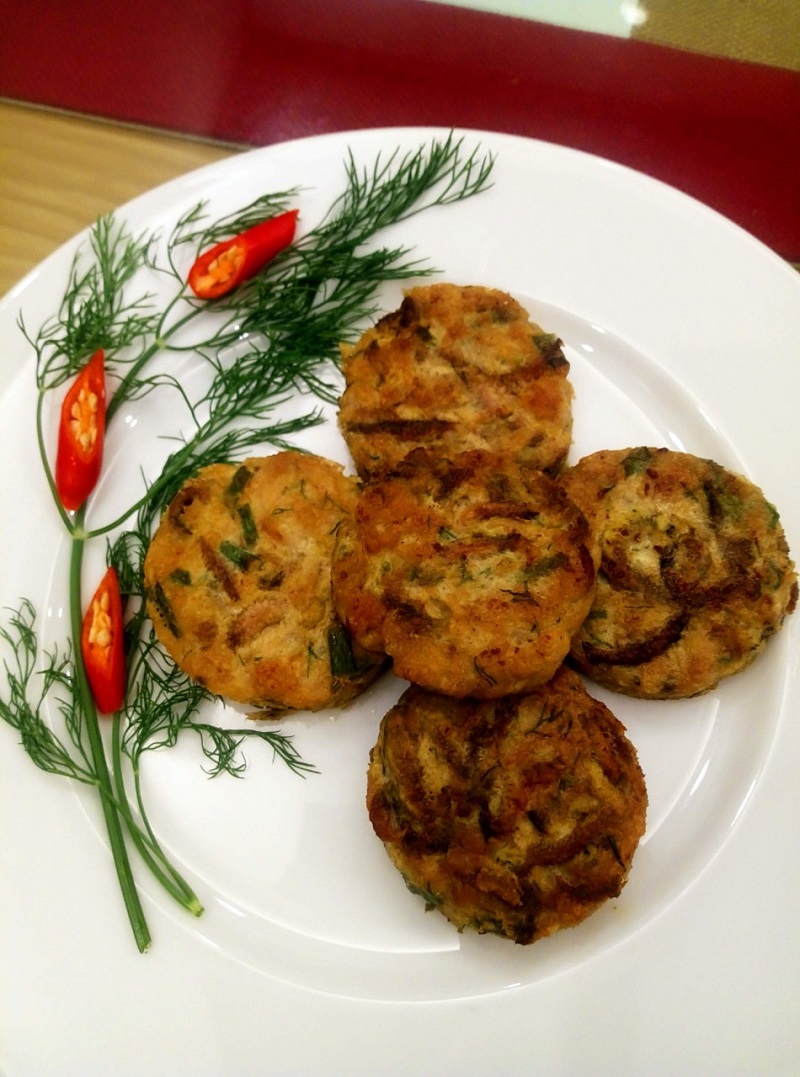Vietnamese specialties: Someone’s loves, other’s horrors
The travel guide website of Lonely Planet has listed out 10 most unusual dishes of Vietnam which are loved by locals but horrified by foreign travelers.
According to travel’s expert Fabienne Fong Yan, some Vietnamese typical dishes such as Trung vit lon (fertilized duck egg), Chan ga (chicken feet) or Tiet canh (blood soup) might make foreign travellers feel difficult to eat because of its peculiarity, but are very common in Vietnamese eating habits and easy to find on street food markets. As an old saying goes “one man’s food is another man’s poison”, the food writer suggested: “Don’t judge local food habits when traveling: you might end up liking some of those dishes and if not, there are plenty of other food options in Vietnamese street food stalls, markets and restaurants.”
Chan ga- the chicken feet
| The stir-fried chicken feet with lemongrass and chilli. |
Chicken feet are very common in Vietnam and can be found literally everywhere. Although not expensive, they can still be considered a delicacy. Chicken feet can be boiled with ginger and lemongrass then prepare as a side dish in giant meals. Some typical delicious chicken dishes include sweet and sour pickled chicken feet with fish sauce, lemongrass, chili, and kumquat; grilled chicken feet with chili and honey sauce; chicken feet salad, among others.
Tiet canh - fresh blood soup with animal organs
| The Tiet canh - a not recommendation dish. |
Blood soup (tiet canh) is a dish that is not recommended so much anymore as it is a seasoned mixture of fresh blood from different animals and can easily carry infections. In large cities, this dish is only served in large restaurants that have a Food Safety Certificate. Blood soup is usually made from the blood of goats, pigs and ducks.
These animals’ blood was mixed with some fish sauce, boiled water and poured over chopped animal organs to be some jelly-like pastes, then is eaten accompanied with fresh lemon juice, roasted peanuts, pepper and herbs.
Chao Long- pig’s organ soups and other animal organ soups
| The pig’s organ soup is served hot to eat accompany with pepper and herbs. |
On night street food stalls, it is not unusual to see a display of all possible organs, so diners can choose which they want in their broth or porridge.
Options can include duck liver, pig brains, pig’s intestines or stomach, or more ordinary pig knuckles and feet. The recipes for organ soups or soups using uncommon parts of the animals are diverse and they show the resourcefulness and no-waste policy of the Vietnamese when it comes to food.
Oc - the snail dishes
| The dish of steamed snails with ginger leaves. |
In the old days, snail was only a type of rustic food for farmers in the countryside, which is cooked simply by stir-frying or boiling. Nowadays, the simple food become a beloved specialty by many Hanoi people. So, it’s the time for city chefs to showcase their talents: various types of snail dishes are prepared with different wonderful mouth-watering tastes.
Boiled or stir-fried snails are popular dishes in the sidewalk snail street eateries, meanwhile, more upscaled, expensive and sophisticated dishes of snails that serve in high-end snail eateries are steamed snails with ginger leaves (Oc hap la gung), snail pies (Cha oc), spring roll with snails (Nem oc) and Snail hotpot (Lau oc).
Trung vit lon- Fertilized duck egg
| Trung vit lon- a Vietnamese's favourite dish for breakfast. |
Fertilized duck eggs are eggs in which the duck embryo is already partly formed, although it is not always visible as an actual duck. The cheap-eat dish is appreciated as a rich source of protein that many Vietnamese people used to having them for breakfast.
For balancing the taste, adult eat them accompanied with fresh ginger, rau ram herb and picked garlic and chilli with vinegar.
If some find out the trung vit lon is too big portion to try, take another variant- the trung cut lon: fertilized quail eggs, smaller, so easier to eat. A very popular way to prepare those is warmed up in tamarind and lemongrass sauce (trung cut lon xao me) – a dish commonly served in the afternoon.
Ga den tan Thuoc bac - steamed black chicken with dried herbs
| The dish of steamed black chicken with dried herbs is considered as a food for health recovering after an illness. |
This soup is very common in Vietnamese diets and highly appreciated for its medicinal virtues. The broth is made from Chinese medicinal herbs and dried fruit (including mugwort, dried date and goji berries) and a very bitter rhizome that is not supposed to be eaten, but gives taste to the soup.
The soup can be prepared with ordinary light-flesh chicken but the black chicken, from a special Vietnamese breed, is the most unique version of this healthy soup. It is highly recommended by locals, for person who need an urgent health recovery after an illness in particular.
Sua do - Raw red jellyfish with 'mam tom' or fermented shrimp paste
| The red jellyfish is eaten accompanied with sweet and sour shrimp sauce. |
This is a dish you might not see everywhere: red jellyfish can be found with mobile vendors who ramble the streets in Hanoi’s old quarter area in the morning.
Although not so tasty, the Vietnamese eat it for its texture, and all its taste comes from the aromatic herbs (mint and perilla) and most of all, the fermented shrimp sauce. The dish is also eaten accompanied with grilled tofu and sliced kernel of coconut.
The best raw red jellyfish could be found at No 70 Hang Chieu and it is served before 11am only.
Nhong rang- Fried silkworm
| The Nhong rang - Stir-fried silkworm nymphs |
Stir-fried silkworm nymphs (Nhong rang) are a very common street food find. They are valued for their protein and mineral qualities. In the north in particular, silkworms are fed on mulberry leaves in villages.
When prepared for food, they are fried with fish sauce and sliced lemon leaves. Diners can find them easily as a staple dish served in 'com binh dan' or rice buffet eatery, so it’s not difficult to find if travellers want to try it.
Cha ruoi - ragworm-pie
| The hot ragworm-pie is served with vermicelli and sweet-and-sour sauce in the eateries in Hanoi's Old Quarter area. |
Ragworm is a type of mollusk, belonging to a class of “fluff worms” that are only found in brackish waters in some tropical countries, including northern part of Vietnam. The dish is a mixture of the worm themselves with minced pork, duck eggs, fish sauce, a little pepper, minced tangerine peel, dill, and green onion.
The worms have awful-looking appearance when they are alive: the colorful creature with size of half of a baby’s little finger and with a soft fuzz around their bodies are wriggling around a bowl, forlornly trying to escape.
The fact is, though, that the worms are quite nutritious and their rarity, harvested just once a year, makes them much sought-after. If the diner wasn’t quick and wanted to buy them straight away, he’d have to wait a whole year for another chance.
The Cha Ruoi Hung Thinh, a street stall in Hanoi’s hectic Old Quarter, is one of few eateries in Hanoi serving cha ruoi.



